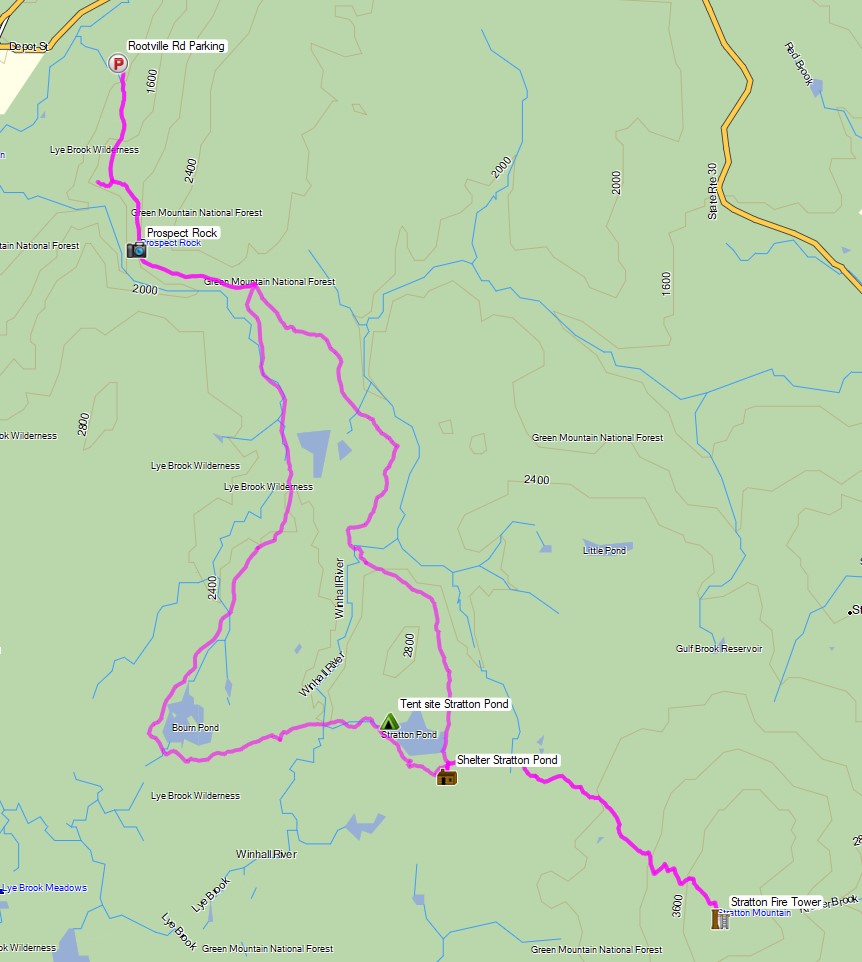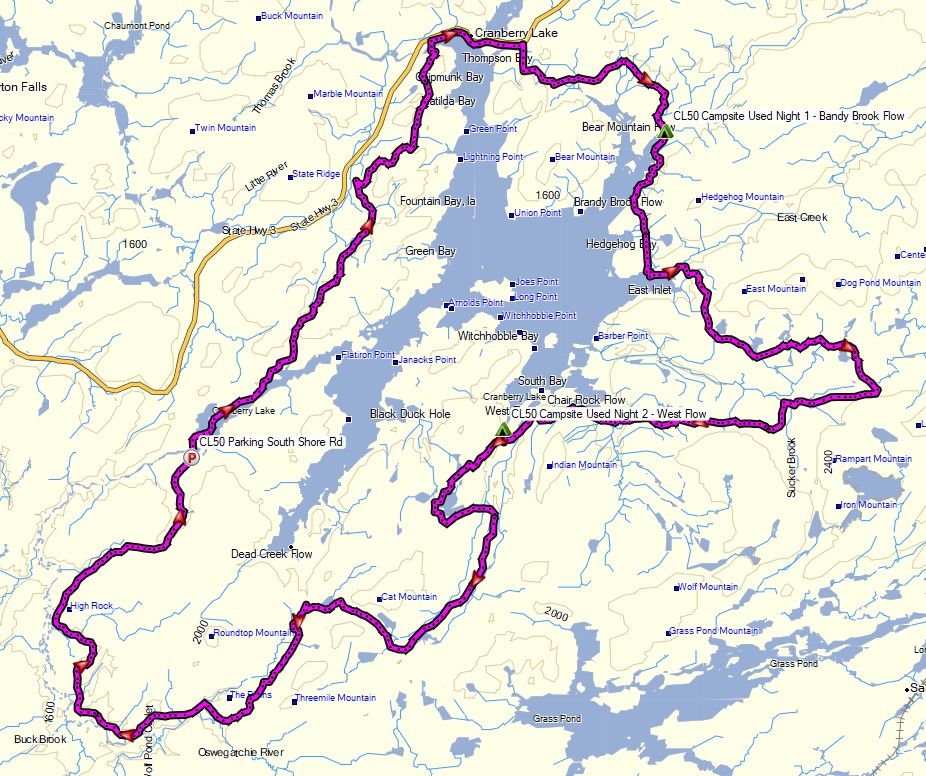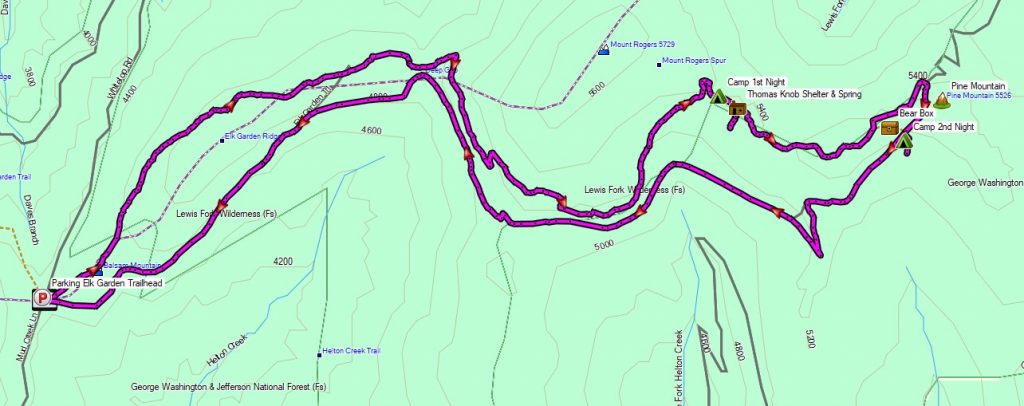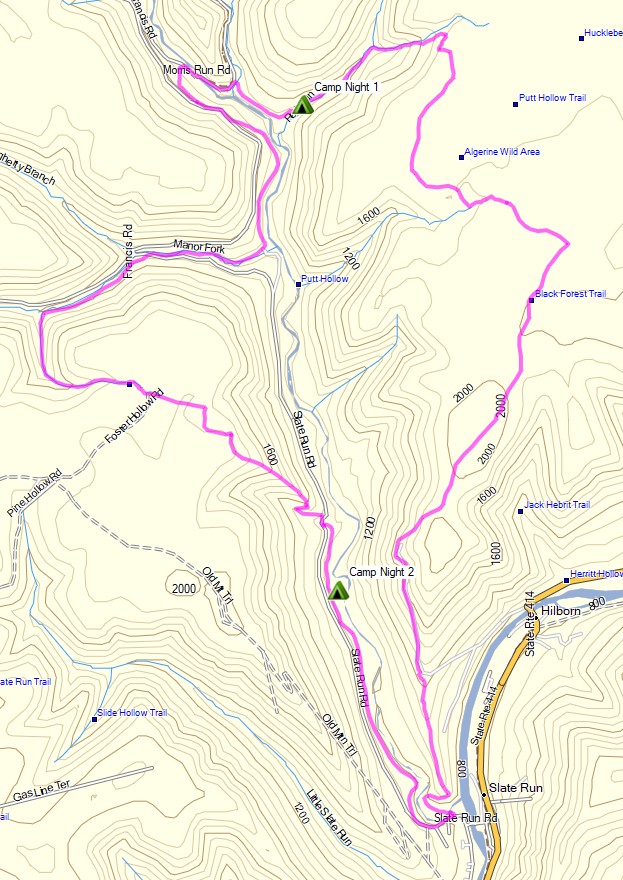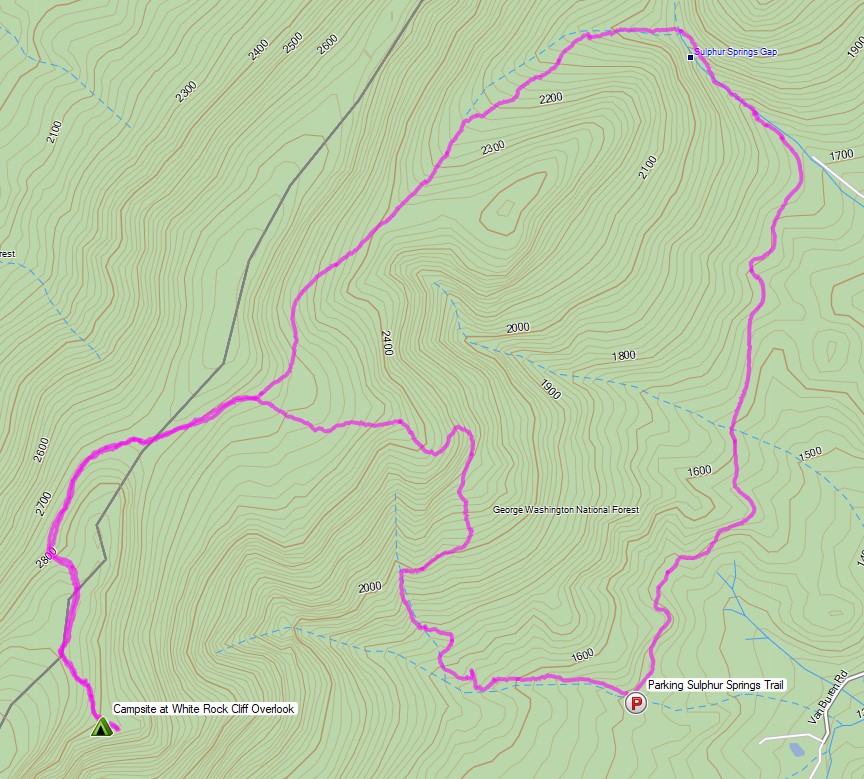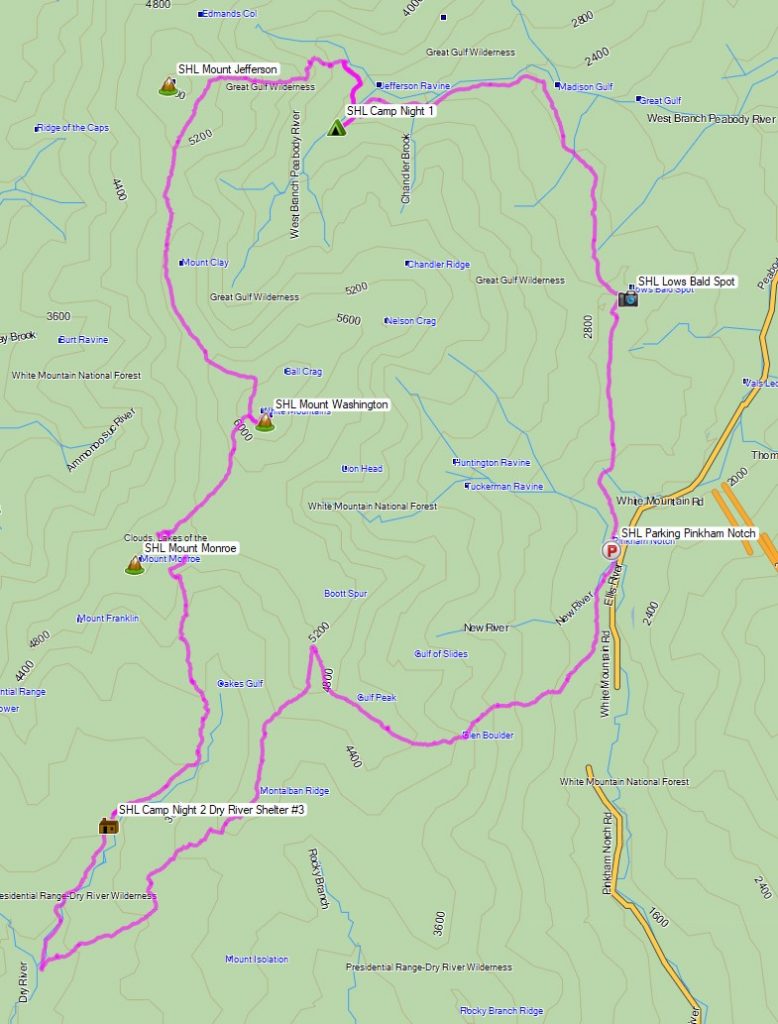Backpacking, Hiking & Shelter Camping in Vermont’s Lye Brook Wilderness.
FTC Disclosure: This post contains affiliate links, which means I may receive a commission for purchases made through some of my links.
For this late November backpacking trip, I decided to hike a 3 day, 23 mile loop in the Green Mountains with 2 nights of camping near Stratton Pond and Bourn Pond. By setting up a base camp at Stratton Pond, I would also have the opportunity to do an out and back hike on the second day to visit the fire tower that sits atop Stratton Mountain. Built in 1934, the 360 degree views from this fire tower are said to have inspired the creators of the Appalachian Trail and Vermont Long Trail, the latter of which runs the entire length of Vermont.
My weather conditions were forecasted to range from above freezing down into the upper 20’s with a mix of rain, sleet, and snow throughout the trip. Because of this, I added some additional clothing layers, gloves, and a full set of rain gear to my standard ultralight backpacking load-out. My sleep system was a minimalist hammock camping setup, so I was still able to keep my pack’s base weight down to around 10 pounds.
This particular area of the Lye Brook Wilderness offers a wide variety of backcountry camping options including unofficial (but legal) stealth camping, designated tent sites, and a very nice 3 level wooden shelter. I decided to keep my options open see how things played out based on the weather and what mood I was in once I got there.

